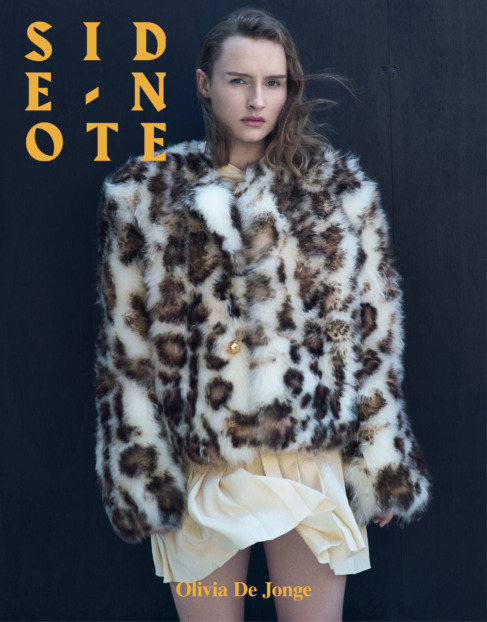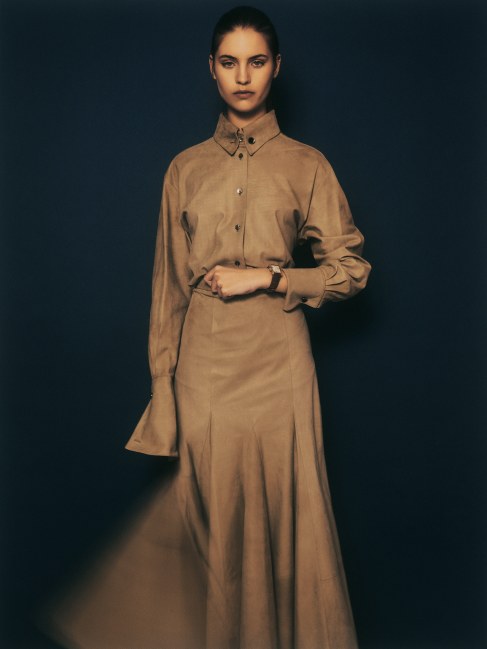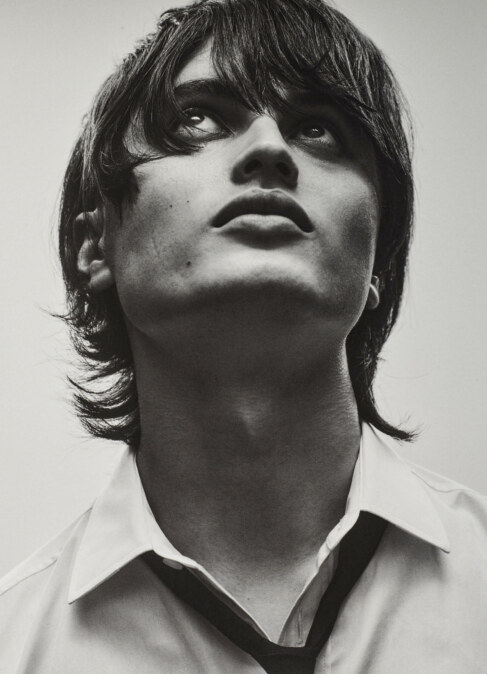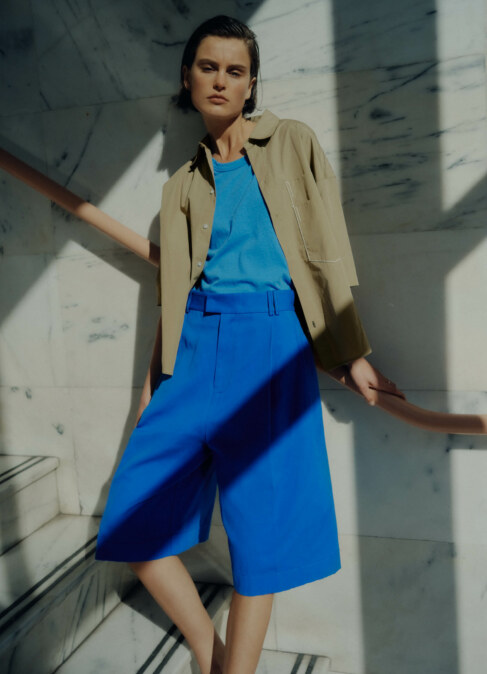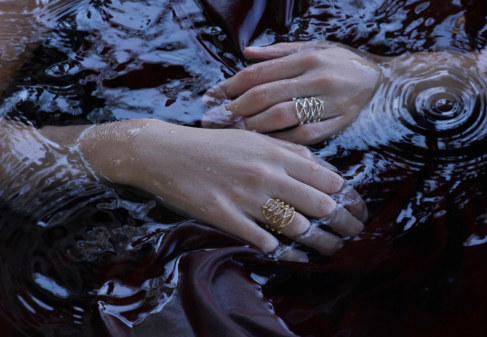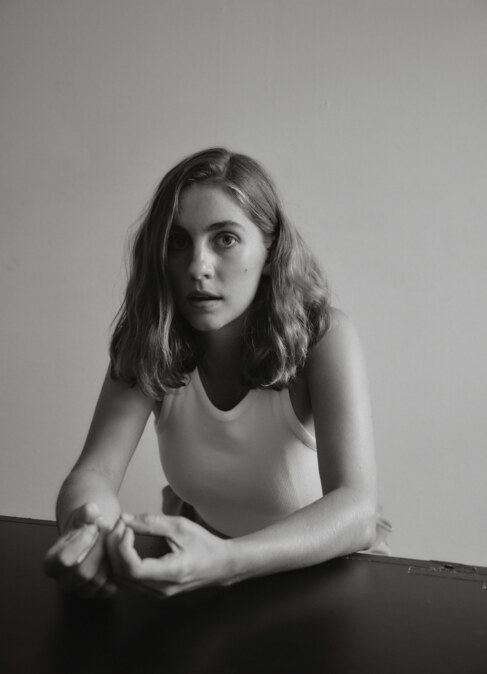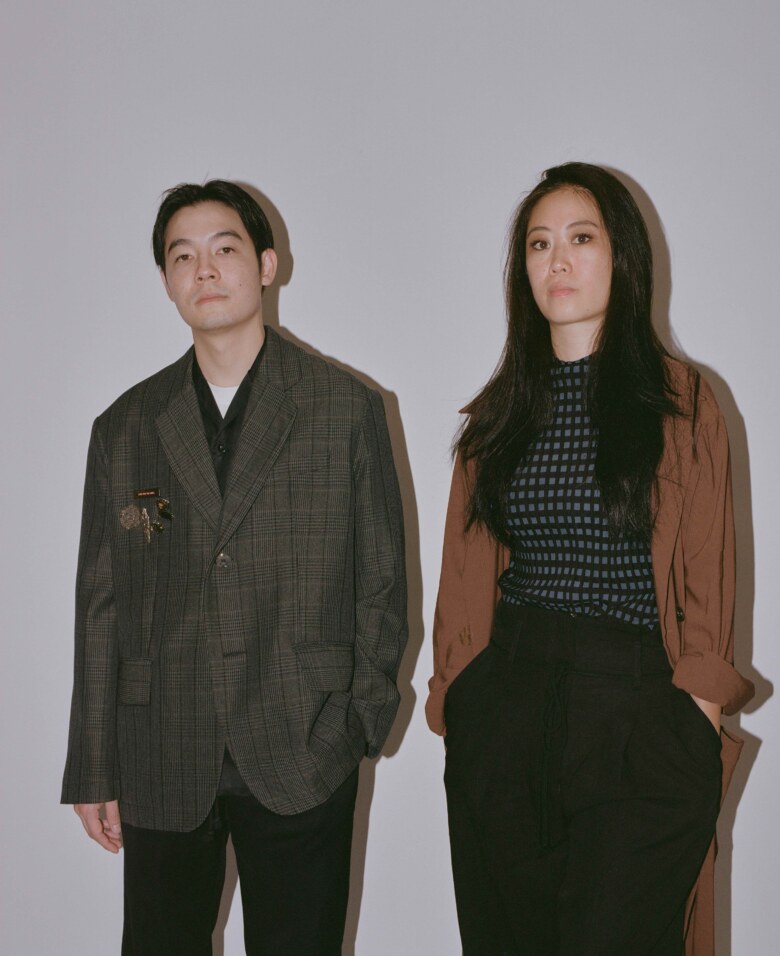
Song for the Mute clothing
PEOPLE OF NOTE: LYNA TY AND MELVIN TANAYA ON SONG FOR THE MUTE
The fourth floor of a sprawling Haussmannian building after dark in Paris. Grand foundations, though worn, are just visible from a darkened staircase that crawls up its core; stately mouldings and marble entryways lit by a lone neon beam on each floor. The effect is somewhere between squat and splendour, marvel-making yet minatory, an edifice that has stories ground into its walls. It draws you in to listen.
It’s a feeling that grows upon walking into the showroom for the Australian label Song for the Mute, founded by Lyna Ty and Melvin Tanaya. The space serves as a crucible for their collections, which weave narratives of the disenfranchised and down-on-luck that transcend their garments. Influences spring from sound, material, people and the ethereal cadence of stories that haven’t yet been told.
Ty was born and raised in Paris, Melvin grew up in Indonesia, and the pair met at school at age 10. Tanaya, of Chinese Indonesian background, studied visual communication at UNSW, working for the UNHCR while completing his master’s. Ty, of Cambodian Chinese descent, received a scholarship to the Whitehouse Institute of Design before returning to Europe to study fashion design at Accademia Italiana di Moda.
When Tanaya and I meet, he is finishing for the day, following a gruelling week of back-to-back sales appointments for the brand’s newest collection, 24.2 Teardrop, during Paris’ Haute Couture week.
“It’s always [about taking] these almost classic, heritage fabrics or silhouettes, then contrasting [them] with something grotesque or off-putting,” explains Tanaya by way of introduction to the brand. “It has this kind of geeky feel that has a rebelliousness or a punk-ness come through. That’s the yin and yang of Lyna and I. Lyna likes anything that’s imperfect, whereas I’m almost OCD, everything needs to be perfect and clean. And that’s the duel between us that drives the aesthetic. If it’s too perfect, too clean, then it’s not so strong. It [needs] something a bit broken. A bit imperfect. It’s about being proud of those imperfections because that’s what makes us who we are.”
The unisex label started in 2010 when Tayana enlisted Ty’s help for a T-shirt pattern. “Nothing fits me because I’m this skinny Asian kid that’s not too tall. Everything makes me look like a toothpick!” Tayana says, laughing. The Song for the Mute oeuvre began with an asymmetric T-shirt finished with raw seams that Ty crafted with a trompe l’oeil graphic of a hand dragging the tee and a dismembered ear sprouting from the shoulder. “[There was a] hand dragging a T-shirt across the heart. It was [about] unfair expectations,” he says. “Coming from an Asian background, [one] might not be able to pursue their dreams or do what they like because of those unfair expectations. We can be pushed to do things we may not want to do.” It was from here that the first seeds of the name Song for the Mute sprung. The design duo seeks to give a voice to the voiceless.
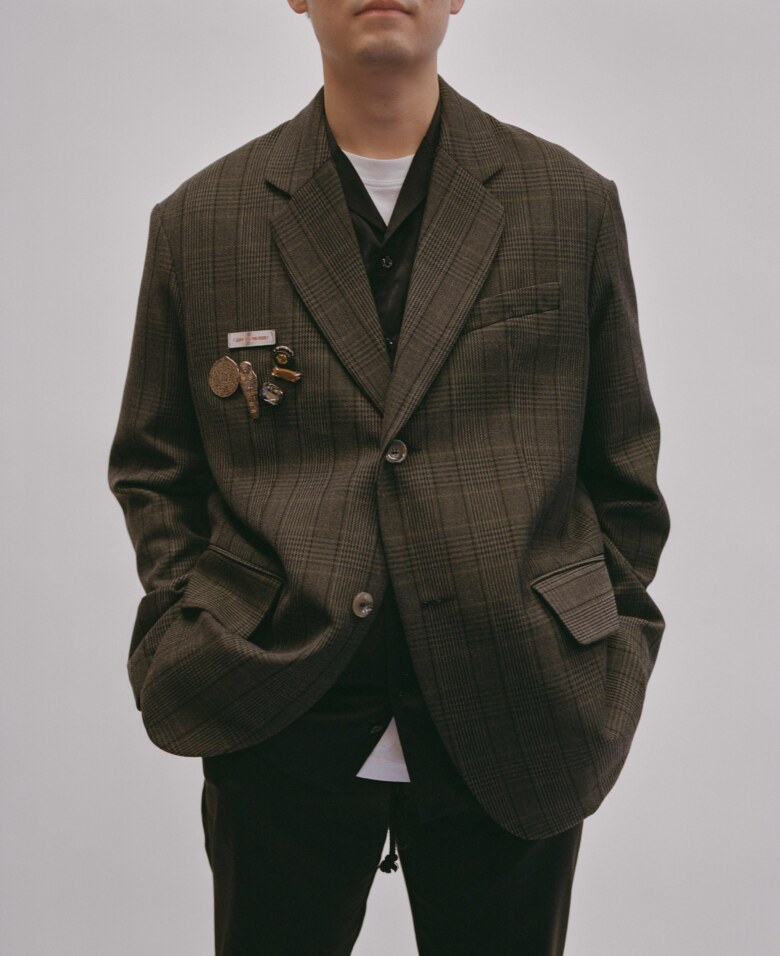
Song for the Mute clothing
Song for the Mute orchestrates seasons as lyrical chapters; the brand is a “long-form story”. Bound by narrative threads, designs unfold as prose woven with exceptional fabrics, some of which are engineered by the label themselves, and the alchemy of experimental processes, crafted at Italian, Japanese and French fabric mills. Embarking on a new chapter in 2023, the label opened its first flagship store on Sydney’s George Street. This chapter, a melody of milestones, marked an ode to the brand’s evolution, inviting patrons to step into a space in which each stitch and trinket echoes with the brand’s off-kilter aesthetic.
Though having gathered a strong, unwavering following of those in the know, the brand was put on the map following a 2022 collaboration with Adidas Originals in the Asia Pacific and Greater China regions, following a reach out from Patrick Ng, a vice-president of Adidas Originals APAC, on social media. Thanks to an immediate, sell-through success, a second collaboration launched globally across apparel styles and footwear featuring the brand’s signature overblown volumes, frayed edges and subcultural references.
Though pieces are intentionally dishevelled — one house-engineered grungy check sees two fabrics needle-punched to become a single, punctured material, overlaid with hand-appliqued sequin patches; a denim story is finished with teardrop motifs fashioned from drawcords that have been painstakingly shredded — craftsmanship is of exacting quality. Cotton tees, created from the same yarn as Hermès cotton, are spun into menswear silhouettes. Tayana wears his own well-loved style from 2020, which looks identical to a 2024 iteration hanging next to him on the rack. The co-founders work closely with their mills, travelling multiple times a year to Nagoya, Osaka and Tokyo to closely follow each step of the creation process.
“Naivety is a powerful thing. We went [to the mills] and just asked dumb questions, and they really took us under their wing,” Tayana explains. “For example, we [now] know that wool gabardine can be finished with chlorine so that it reaches a deeper black. Some fabrics are very static and catch dust, so you can do an anti-static finish. This cupro lining” — he points to a blouson jacket — “is original fabric that took us two years to develop.”
Beyond complex fabric, in Teardrop, Song for the Mute explores emotionally treacherous territory. “It’s called Teardrop because of the jesters, the jokers. In front of their mask, they need to be strong, but behind, they’re quite broken. And we think that is the state of the moment. The world — it’s not a beautiful place at the moment, and we’ve tried to project that with this collection.”
Tayana recites some words from Ty’s manifesto for the collection: “aggressive and dark”, “disruptive nature”, “masking the inner self ”. In doing so, he muses on the catharsis of channelling difficult emotions through creativity. “That’s what I’ve gone through the last couple of months. And [Ty] sees that. And it’s important that we acknowledge it and that we know what to do with it. I think that’s one thing that’s got me through this period.”
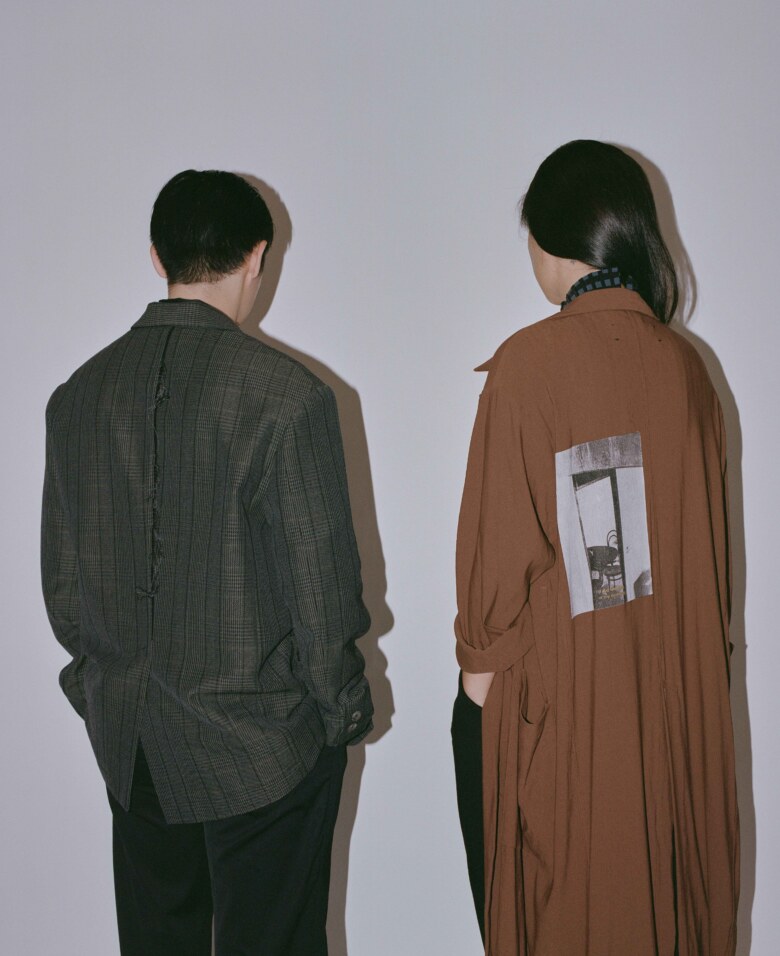
Song for the Mute clothing
_________
SIDE-NOTE acknowledges the Eora people as the traditional custodians of the land on which this project was produced. We pay our respects to Elders past and present. We extend that respect to Aboriginal and Torres Strait Islander peoples reading this.

